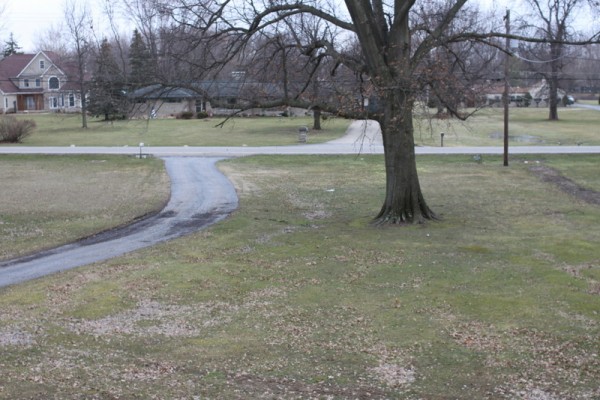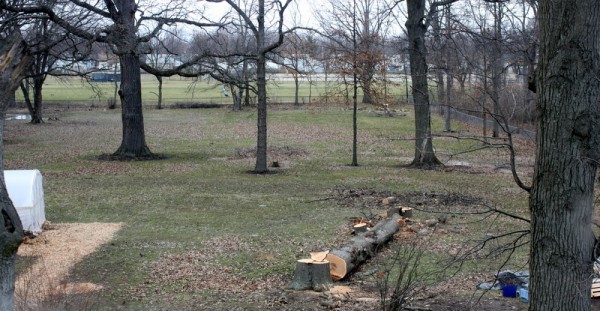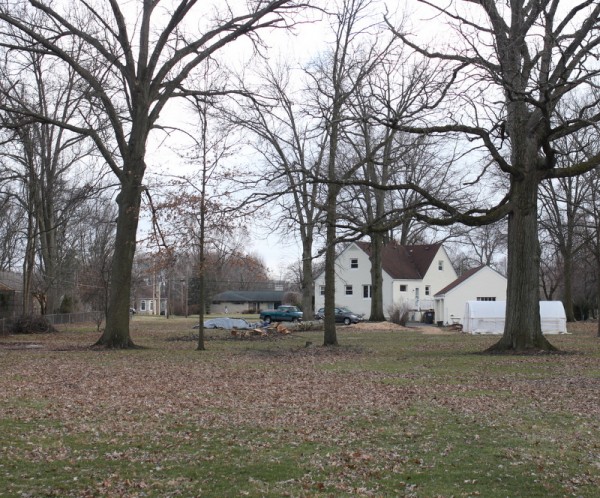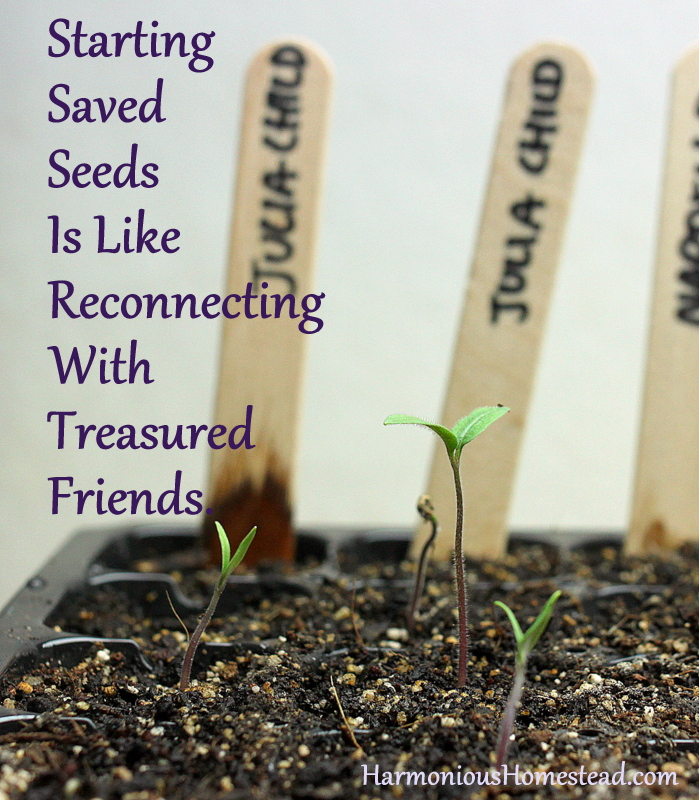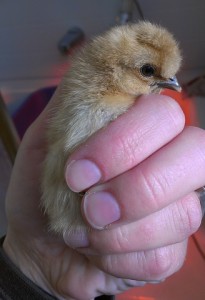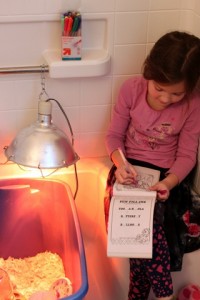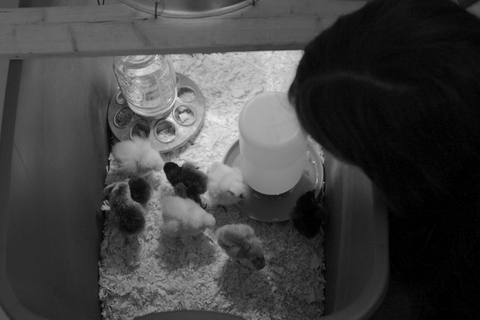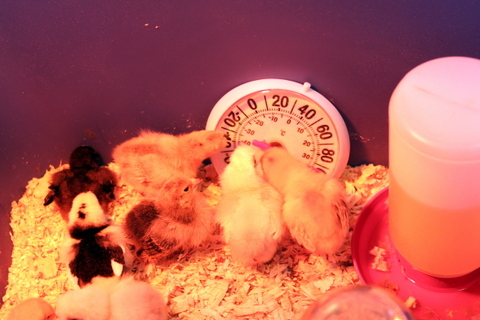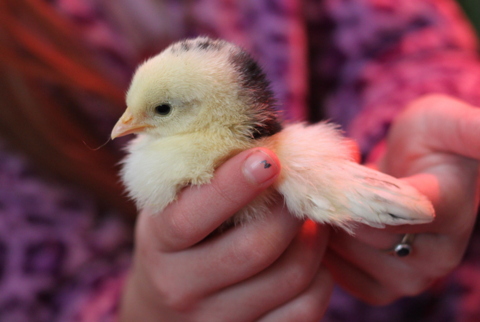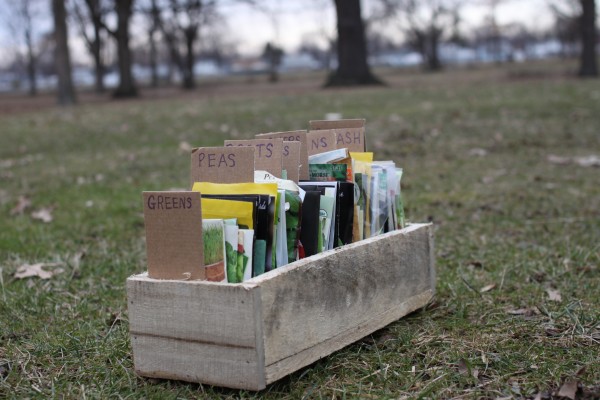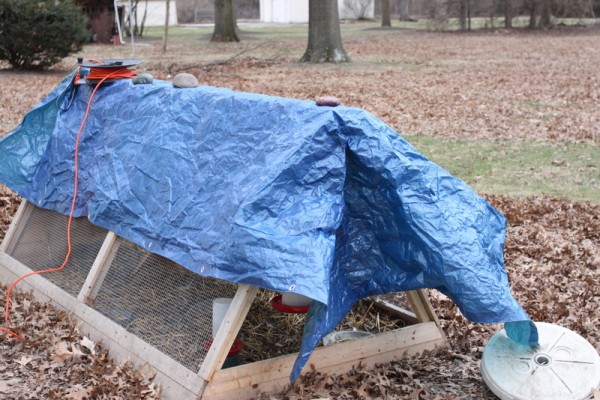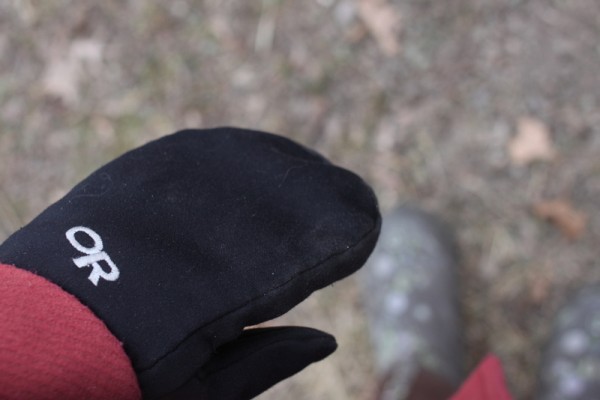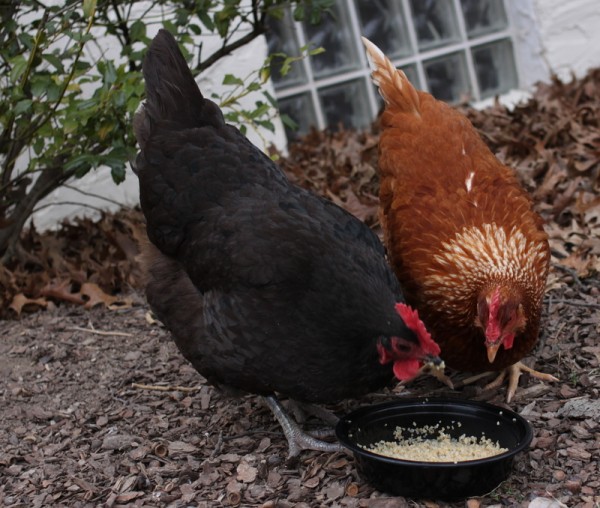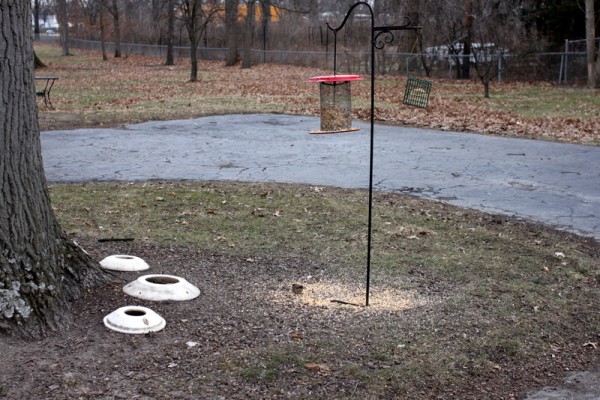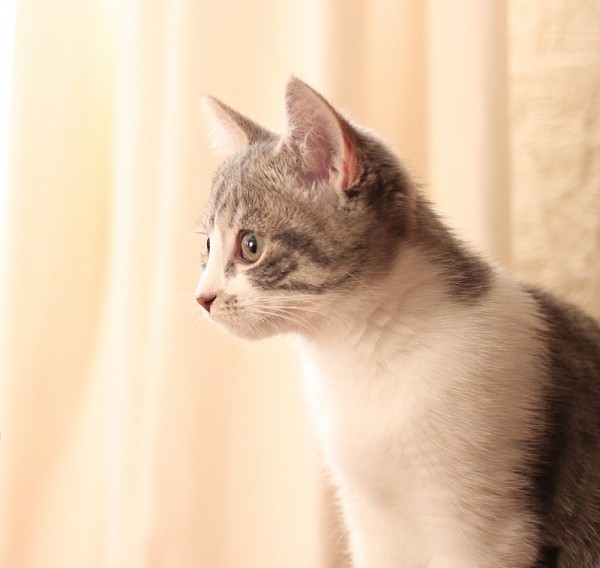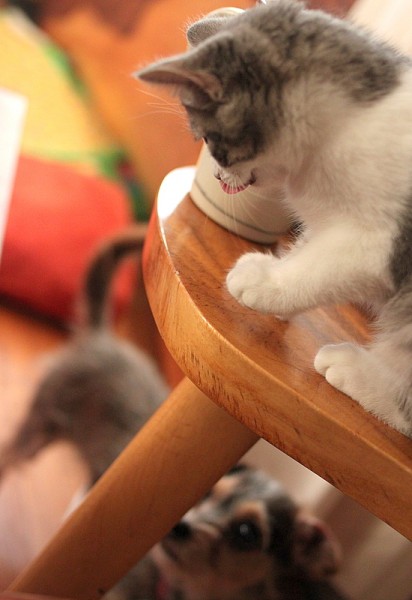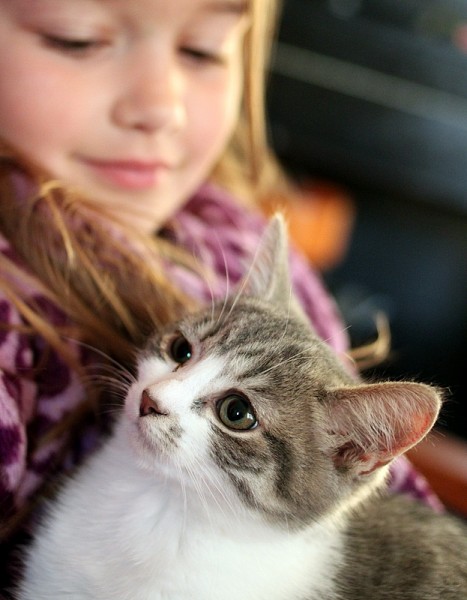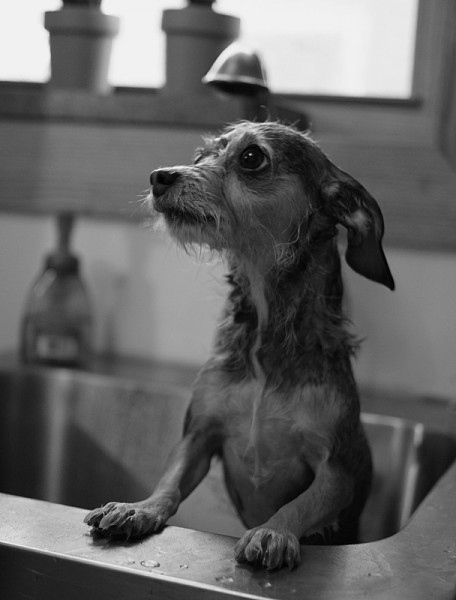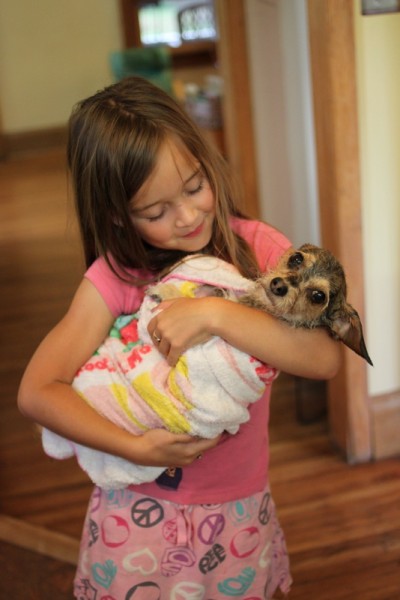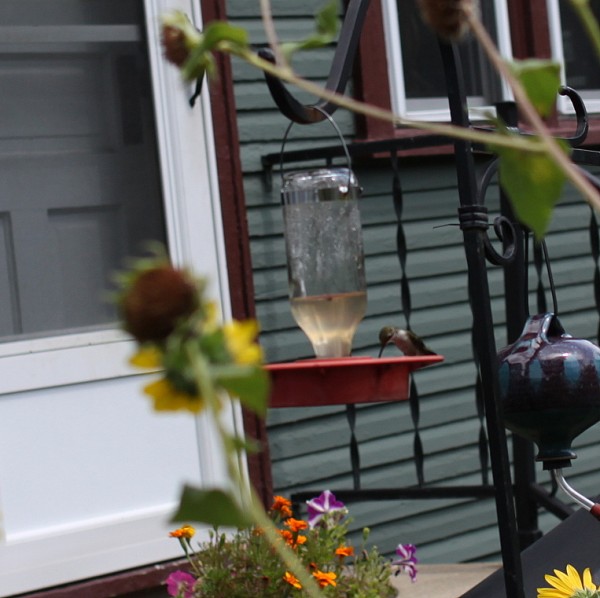The homestead has changed in many ways since I posted Winter Solstice 2013 Seasonal Snaps, though I felt wind on my cheeks and spied snow in the air on both photography days. Mostly we have been building and hauling; we're eager to finally see edibles growing at the next turn of the seasons. Not much action in the front yet, pictured in fleeting sunlight.
Careful eyes will spot the new mailbox at the road, a result of a drunk driver smashing our old one to smithereens.
In the backyard, Jacob Sauer Tree Care recently removed a dying honey locust to give more light and eliminate the thorn hazards. We agreed to haul the brush and cut all wood to save costs, a chore that has taken many days. You may be able to spot a catalpa and oak tree Alex cut down further back in the yard.
You can also see the hoop house in this picture, off to the left. We built a 10x20 foot season-extending structure over several work days with the help of many friends. One of three beds inside is already planted with greens and roots.
Here's the hoop house from the back of the yard. You can also see the dirt pile we're hosting for City Folk's Farm Shop*. That big empty area in the foreground? It's where the family who owned the house before us traditionally kept their garden. We'll use the well-drained spot for an orchard with alley plantings in between rows.
I have to admit I'm a little disappointed in how similar the two seasons appear for all the aches my body feels from working outside. Surely June 21, the summer solstice, will yield a totally different view.
*Alex, Lil, and I want to wish Shawn and Gerry at City Folk's a VERY HAPPY FIRST ANNIVERSARY! We love having this shop in our vicinity for homsteading supplies and education. They are hosting a homestead tool swap, chicken feed giveaway, silent auction, and more fun activities during their birthday week - go visit!


